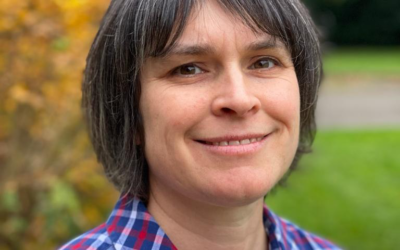Dr Peter Fisher discusses his approach to this common, painful and potentially crippling group of conditions
Arthritis and rheumatism are among the commonest forms of chronic disease and, with an aging population, are set to become commoner still. Strictly speaking, arthritis means disease of the joints, while rheumatism is disease of the soft connective tissues which support and move the joints. In fact, the distinction is often artificial, since many of these conditions affect both the joints and connective tissues.
Osteoarthritis, the commonest of these conditions, is basically “wear and tear” of the joints. The root of the problem is wearing out of the cartilage, the tough, slippery “gristle”, which allows the ends of the bone to slide smoothly over each other and absorbs shocks. The joint becomes stiff and painful, and may creak as it is moved.
As the cartilage wears down, the bones on either side of the joint may react by forming small bony outgrowths called osteophytes. One of the sites where bony nodes can easily be seen is the last joint of the fingers. Spondylosis is a similar problem affecting the spine; here the main problem is degeneration of the disks which separate the vertebrae.
As one would expect with a degenerative condition the prevalence of osteoarthritis increases with age, it affects nine per cent of the total population but around 70 per cent of the over-70s. It is the commonest of all rheumatological conditions, and indeed probably the commonest of all chronic diseases, because many sufferers live with it for many years. Not surprisingly it tends to affect weight-bearing joints (eg low back, hips and knees). Joint injuries or overuse (for instance heavy physical work or professional sport) predispose to osteoarthritis later in life. Overweight is another important factor.
The other two main groups of arthritis and rheumatism are inflammatory arthritis, of which the commonest form is rheumatoid arthritis, and soft tissue rheumatism. Rheumatoid arthritis affects about one person in a hundred; it is nearly three times commoner in women than men (for unknown reasons). Its cause, too, remains frustratingly elusive. It tends to come on at an earlier age than osteoarthritis (typically in the 30s to 50s) and is more aggressive, running a more rapid course: about a third of sufferers are seriously disabled within ten years, although it is very variable. It particularly affects the small joints, especially of the hands and feet, causing a typical hand deformity where the fingers slant sideways. But it can affect almost any joint in the body, and also cause nodules under the skin and eye problems. There are many other forms of inflammatory arthritis, some of them associated with infections.
The final group is true rheumatism, affecting the soft connective tissues rather then the joints themselves. There are many forms, some with picturesque names. They include enthesopathies which affect the point at which tendons connect to the bones – the best known of these are tennis elbow, affecting the outer side of the elbow, and golfer’s elbow, which affects the inner side. Capsulitis – inflammation of the capsule of tissues that surround the joint – most commonly affects the shoulder, and may lead to a stiff “frozen” shoulder. Some of the more amusing names are reserved for bursitis – inflammation of the bursae, cushioning pads which overlie many joints. These include Housemaid’s Knee (also known as Clergyman’s Knee), from too much kneeling. But my favourite is Weaver’s Bottom – so called because it used to affect weavers who had to shuffle up and down long benches to tend their looms!
The most common form of soft tissue rheumatism, however, is fibromyalgia (which used to be known as fibrositis). It affects about two per cent of people and is much commoner in women than men. It is a controversial condition; some believe that fibromyalgia and chronic fatigue syndrome (ME) are varieties of the same condition, certainly there are similarities. The typical features are widespread musculoskeletal pain and aching with tender points at several specific locations. It is frequently associated with poor sleep and fatigue as well as other problems including migraine and irritable bowel syndrome.
There are many problems with current conventional treatment of arthritis and rheumatism. For instance, although osteoarthritis rarely, if ever, killed anyone, a group of drugs often used in its treatment, the non-steroidal anti-inflammatory agents (NSAIDs), including aspirin, Ibuprofen and Voltarol among many others, certainly has. There are some 12,000 hospital admissions and 2,000 deaths from these drugs every year in the UK alone. Although the new generation of NSAIDs is safer, they are only glorified painkillers, which do not affect the basic disease process. Similarly for rheumatoid arthritis, a range of powerful drugs is available but all of these have long and alarming lists of side effects.
The homeopathic approach
In treating someone suffering from arthritis and rheumatism with homeopathy, just as with any other condition, I look at the person as a whole. In practice this means starting by looking at what exactly the problem is: pain, stiffness, sleep disturbance, limitation of particular activities, or what? Where is it? How long has it been a problem, and what has been the evolution? “Evolution” means where did it start and what has happened since – has it moved, if so, in any particular pattern? Does it come and go, any pattern to that? Did anything seem to trigger it off in the first place?
Then the modalities – simply any factor which makes the problem worse or better: for instance hot or cold applications, bandaging or support, the weather etc. Here it is important to know what is normal: for instance it is usual for an acutely inflamed, swollen, tender joint to be relieved by cold applications. But in homeopathy exceptions to the rule are of particular interest.
I then move on to the rest of “homeopathic” histories, I integrate the two. Sometimes the conventional part of the history can give a vital clue. For instance, a woman came to consult me with extra-articular manifestations of rheumatoid arthritis. When I asked if anything seemed to have triggered the problem, she said she couldn’t think of anything. But when I enquired into the social background it turned out she had been through a messy divorce, including a court battle for custody of the children, which she eventually won. The onset of her illness coincided almost to the day with the end of the custody case. I was amazed that she did not make the connection. It was clear that this was a topic she didn’t want to discuss. Translated into the quaint 19th century language of some homeopathic books this is “aggravated by consolation”. It was this that gave me the first clue to the homeopathic medicine, Sepia, to which she had an excellent response. This was an example of “not what they say, but how they say it”.
Then to complete the history, the “mentals” and “generals”. The mentals include how the patient reacts to and copes (or fails to cope) with their problems, and the so-called “constitutional” features: is this a strong-willed and assertive person, or the opposite? Tidy and organised or untidy? And so forth. Then the generals, for instance does this person feel the cold excessively, prefer the morning or the evening? I then examine the patient, again this not just a matter of good medical practice, but can give important clues to possible homeopathic treatment. For instance warm, swollen joints may suggest the medicines Apis or Bryonia; stiff contracted joints Causticum or Formica.
Some cases of arthritis and rheumatism treated with homeopathy
Mrs KS is an Asian woman, aged 39 when she first consulted me in April 1993. She had been diagnosed as suffering from rheumatoid arthritis about 18 months earlier. She worked in a supermarket, and although she had had some pain and swelling in her knuckle and finger joints for a couple of years before the diagnosis was made, this had never really bothered her until she started to work on checkout. (This was in the days before bar code scanners, so checkout involved a lot of keyboard work!) Within weeks of starting on checkout, she developed severe pain and swelling in many of her finger and knuckle joints. She was taken off checkout, but this lead to only slight improvement. Her GP referred her to the rheumatologist at the local hospital, and the diagnosis of rheumatoid arthritis was made, confirmed by blood tests. She had had several conventional treatments, which either did not help, or caused side effects.
Her GP was sympathetic and referred her to me at the RLHH. The basic features were typical of rheumatoid arthritis, but on talking to her a number of idiosyncratic characteristics came out. Although the problem had started in the hands, it had since involved a number of other joints, but unusually, the arthritis moved unpredictably from joint to joint. A knee, say, would be painful and swollen for a couple of weeks, then settle down by itself, only to flare up elsewhere. Her arthritis was definitely worse before her monthly period and it became clear she was quite depressed about the situation: she became weepy, on discussing it. But unlike the patient mentioned earlier, was quite willing to talk about her feelings, and seemed to feel better for doing so.
These features gave me a “tripod”, the traditional basis for a sound homeopathic prescription: one typical local, mental and general feature. I prescribed Pulsatilla. I saw her again a couple of months later and was pleased to hear that she was feeling much better in herself, more cheerful, and felt that her joints were better. She had reduced the painkillers (which upset her stomach) and was taking them on an “as required” basis. There have been some ups and downs since, and I have prescribed some other medicines, but always come back to Pulsatilla. The blood tests have steadily improved, and x-rays shown no further deterioration. She still works in the supermarket, but is now a manager. I continue to see her once or twice a year, but she now has virtually no trouble from the arthritis and takes only homeopathic treatment and nutritional supplements for it.
Miss AQ, 73, is a colourful and artistic character: a ballet dancer since her teens, she had risen to prima ballerina in a major company, and later taught ballet for many years. She came to me complaining of pain in various joints, particularly the knees. She had had numerous injuries and strains to her joints, especially feet and knees, during her career. On many occasions she had danced despite injury. She had had several operations on her knee cartilages. On examination, I found her to be extremely supple, able to touch the floor with the palms of her hands with straight legs. She had large nodes on her fingers.
It was clear that she had osteoarthritis relating to overuse and injury. She had been advised to have her knee joints replaced, but was reluctant to do so, because she felt that the previous knee operations had done more harm than good in the long run.
I was interested by her extreme flexibility; it seemed that this was not solely due to her professional training. As a child her mother had taken her to the doctor for “growing pains”, and the doctor said she had sway-back knees, and she had been “double-jointed”, able to bend her thumbs right back to her forearms. On this basis I prescribed Calcarea fluorica, and Symphytum, Rhus tox and Ledum cream to be rubbed into the joints. She came back a couple of months later, saying that the pains in her joints were under good control, the cream gave several hours relief when she needed it. She probably will need to have her knee joints replaced eventually, but for the time being she finds her symptoms quite tolerable.






